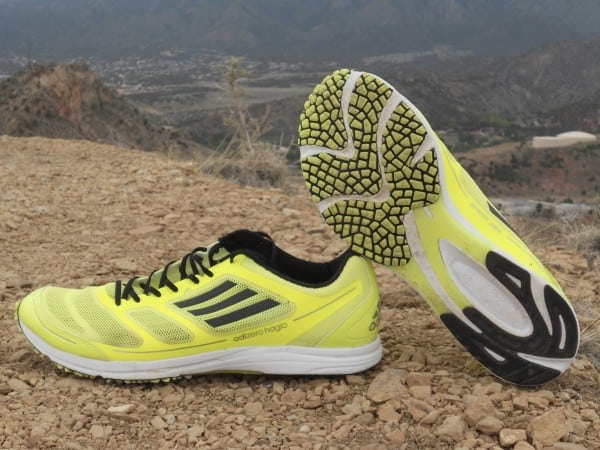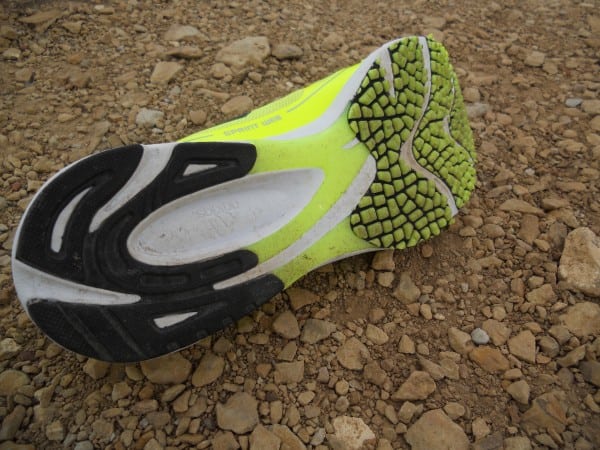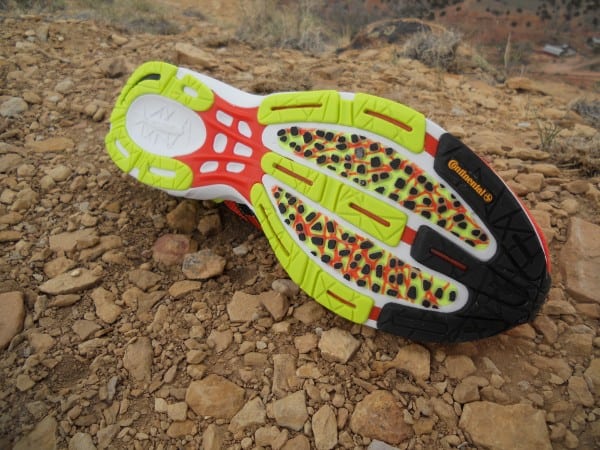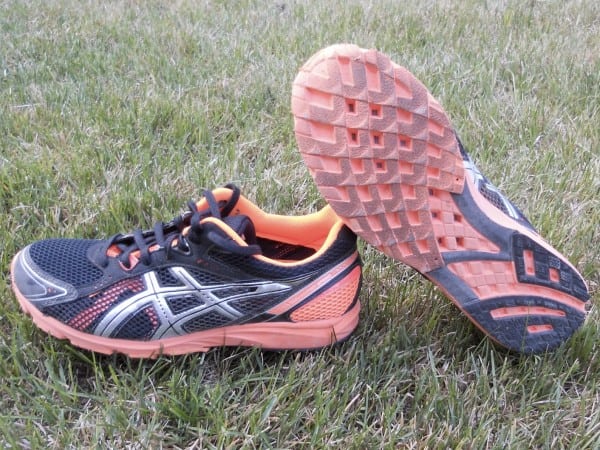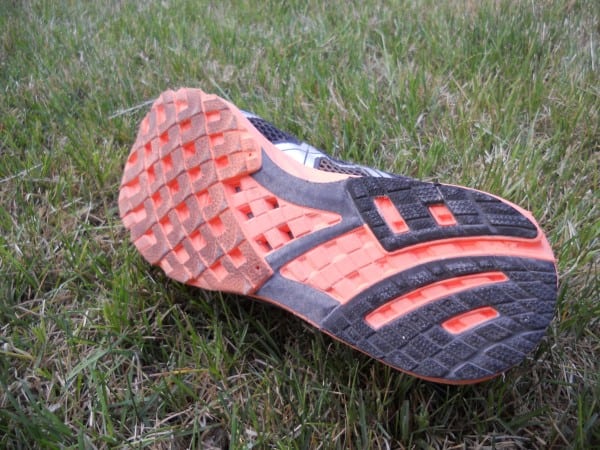Our Favorite Trail Running Shoes
Check out our Best Trail Running Shoes article to learn about our current favorite trail running shoes!
Road Racing Flats for the Mountains (2012 Edition)
At any trail race you’re bound to see runners wearing all types of shoes, from traditional trail models with a great deal of protection to flimsy minimalist shoes lacking rock plates and traction lugs. Prior to the movement towards minimalist trail shoes, many top runners simply used road flats for training and trail competitions and thought little of it. Matt Carpenter’s years of using Nike Streaks to win the Pikes Peak Marathon, and Anton Krupicka’s use of everything from Puma H Streets to Nike Waffle Racers to win a multitude of tough mountain ultras come to mind. So I asked Joe Grant, ultra/mountain runner extraordinaire, what draws him to regularly select flats for racing and epic trail adventures. While Joe states that he doesn’t exclusively use flats, his experience and knowledge of running shoes was very much appreciated for this review, and his eloquent and generous replies are peppered throughout my shoe reviews below.
I set out to review several popular road flat models to see how they hold up on mountain trails, and I’d like to thank Erik Dube at Running Warehouse for providing me with several models to test on the trails.
Adidas Adizero Hagio
Adidas’ update to the popular Adizero Rocket, which was discontinued for 2012, continues in the same vein of providing a featherweight upper on top of Adidas’ firm Adiprene cushioning. At just over 6 ounces for my size 9.5s with a 5 mm heel drop, the Hagio ($90) offers a barely there feel with an excellent fit and pretty impressive traction.
I think Joe Grant sums up the Hagio perfectly with this take on the Adizero Rocket:
The Adiprene foam is firm and responsive and remains that way after many miles of use. The firmness helps with underfoot protection and stability when running more technical terrain. The responsiveness makes the shoe feel snappy on smoother terrain or when running uphill. I don’t ever feel like there’s much lost in the energy transfer when the foot strikes the ground. There’s no mushiness or “dead feeling” to the shoe which is quite hard to achieve without the help of a rock plate. While it supposedly has a 6mm drop, it feels flatter to me and the midsole thickness is perfect for pretty much any type of terrain.
The good news is that the midsole of the Hagio is identical to the Rocket as far as I can tell. I found Joe’s account of the Adiprene foam to be true, and I felt it held up for about 200 miles, which is astounding for a racing flat on tough terrain. The Hagio upper features well-placed welded overlays over a gloriously wide toe box, a fit not often seen in a racing flat. The heel cup is snug and the shoe seams to gradually splay over the course of the shoe. One complaint I had about the Hagio, is the stock shoelaces, which I quickly got rid of. Although thin and comfortable, they came untied repeatedly during my runs, and replacing them was an easy fix.
Another benefit of the Hagio over the Rocket is that Adidas added fairly sticky rubber nubs to the forefoot area of the shoe that improve traction, especially in wet conditions. These nubs are small enough that they don’t really collect mud, and short enough that they don’t impede in the foot strike as explained by Joe:
Other than in mud and snow, I don’t like shoes with aggressive lugs. Lugs add weight, diminish the shoe’s responsiveness on hardpack, catch on things and more importantly cause too much breaking when running downhill. I like to feel a bit of “float” when running downhill, an ever so slight amount of sliding instead of the aggressive stick and breaking experienced with more pronounced lugs. Road flats are great in this regard with some outsoles with mini rubber “cleats” like on the Adios or Nike Streaks providing a perfect float/grip ratio.
Adidas Adizero Adios 2
Could this road marathon world record holder make it on the trails? The answer is yes, absolutely. While the Adizero Adios 2 ($115) has a higher 9mm heel-to-toe drop than the Hagio, it proved to be a more durable shoe for long runs and the lightweight upper held up surprisingly well. I logged more miles in the Adios 2 this winter and spring than any other racing flat and although battered, beat, and torn, the midsole still has some life in it. Once again, the firmness of Adidas’ Adiprene was successful at protecting my feet from rocks, roots, and even cacti (don’t ask). While the upper of the Hagio is constructed of a single layer of synthetic mesh, the Adios 2 sticks with a more traditional dual-density nylon mesh and sewn overlays. The fit of the upper is fantastic which could account for the wide appeal of the Adios 2.
The outsole is fairly simple, but Adidas uses Continental road tire rubber which is fairly grippy on hard/packed trail in addition to hard rubber nubs glued to fabric on the forefoot. Initially, I expected all of these nubs to simply fall off, but after 300+ miles most of them are still there. Although a bit heavier at 7.8 ounces, the Adios 2 proved to be the longest lasting of the bunch as far as midsole resilience and upper durability.
Asics Hyperspeed 5
Asics has a long heritage of making great lightweight racing flats, and the Hyperspeed 5 ($80, 7 ounces, 6mm drop) is no exception. A marked improvement in my opinion over the last update, the 5 uses Asic’s SpEVA foam which is softer than Adiprene, but still offers enough protection for non-technical trail. Again, a great fitting upper with an Asian last (wide toe box) is complimented by welded overlays on dual-density mesh. Joe describes what he looks for in an upper:
The upper is just what you need to hold you’re foot in place with nothing extra. There’s no extra padding anywhere. The overlays happen to be adequately placed so that there’s good lateral stability on varying terrain and also avoids blowing out the shoes in common areas on the lateral and medial side of the forefoot. Since road flats aren’t specifically designed for off road use, it’s never certain whether the overlays will be placed right.
Overall Impressions
Some of you may be asking, what is the difference between these road flats and a minimalist technical trail shoe such as the New Balance MT110, Montrail Rogue Fly, or the La Sportiva Vertical K? The real differences are evident by what these road racing flats lack, such as aggressive outsoles, reinforced uppers, and rock plates. These absences can be a bad thing or a good thing depending on the type of terrain. On non-technical terrain, such as nicely buffed out single track, the smoother outsole and responsiveness of a road flat can feel superior to a trail running shoe. But, the uppers of these road racing shoes are what I appreciated the most. With the vast leaps in trail shoe technology, sometimes the uppers can get a little overbuilt and it is nice to lace up a simple and breathable shoe for a run.
With every shoe company out there touting their own trademarked EVA foam technology, I have to give Adidas’ Adiprene a big thumbs up for trail running. Their racing flats tend to have a firmer feel which also lends a bit more protection. My pet peeve for trail shoes is when any plastic torsion device is exposed in the midsole and the Hagio and Adios 2 both have exposed plastic on the bottoms of the shoes. This doesn’t really seem to affect performance or traction, but something about chewing up a thermoplastic device on the sole of a shoe makes me question durability. For a softer, but very responsive feel, the Asics Hyperspeed 5 was a joy to run in, and on smooth trails or for speedwork this shoe has grown on me increasingly over the past several months.
There are certainly exceptions, Joe being one of them, of folks who can get away with very little shoe on technical terrain and not seem to have sharp rocks stabbing them or hamburger legs by the end of a long run. I learned the hard way, after a particularly painful trail marathon this spring, that road flats only work for me on the least technical terrain or hybrid road/ trail courses. After repeatedly being stabbed by sharp rocks on the downhills I vowed to do a bit more homework on course terrain. But, I would encourage any trail/mountain racer to gauge the feel of a road flat next to their favorite lightweight trail shoe and ask themself what works best for their needs. You may be surprised.
A special thanks to Joe Grant for responding to my geeky trail shoe questions. Go check out his website for beautiful photography, soulful inspiration, and coaching services.
Call for Comments (from Bryon)
- What are your thoughts on wearing road racing shoes on the trails? Do you ever do it?
- If you do hit the trails in road racing flats, what’s your favorite model (or models) at moment? Try any that didn’t make the cut?
